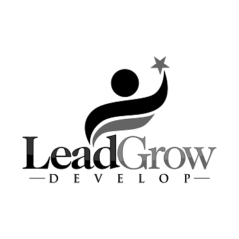Written by: Edrian Blasquino
Image source: fauxels
Productivity struggles at work can severely affect your company’s growth. When the work environment is set up in a way that promotes productivity and efficiency, you’ll be able to take a few steps ahead of your competitors.
As such, it’s best to take note of the different ways to foster productivity in the work environment. Whether it’s a change in office design or improving work-life balance, there are many ways to foster a more productive workplace for everyone.
Physical Workspace Design
An employee’s surroundings also affect their productivity. Some may prefer open spaces while others may work well in closed spaces. Since this is the case, having a hybrid of both options can help create a workspace where employees can best choose their needs and tasks.
Workspace design also goes beyond the workspace’s design. Ergonomic furniture also plays a role in the comfort and safety of every employee. Investing in ergonomic furniture such as standing office desks and adjustable monitors can make a difference in everyone’s work performance. When employees aren’t battling pain or fatigue, they’re better able to focus and maintain energy levels throughout the work day.
Company Culture and Leadership
Another important factor for a productive work environment is good company culture and leadership. Poor company culture and leadership can negatively affect morale and productivity in the workplace. The right company culture and leadership motivate employees to collaborate and contribute more.
For instance, transparent communication can build confidence and reduce confusion among employees. When employees understand the “why” behind decisions, they are more engaged and aligned with company goals.
Rewarding employees for good performance also goes a long way toward company culture and leadership. Regular and meaningful recognition shows that no hard work goes unnoticed. On the other hand, constructive criticism can also help employees perform better and stay aligned with expectations.
Work-Life Balance
Another way for employees to feel supported in their work environment is by creating a good work-life balance. Productivity won’t thrive if employees are forced to work long hours. They’ll just feel burnt out and create mediocre work. With a good work-life balance, employees will have a chance to take a step back and perform at their best without compromising life outside of work.
Work-life balance will also work better when employers set a good example. Encouraging employees to take breaks will work when employers also take time for themselves. Paid time off shouldn’t be a foreign concept for employees – leaders must set an example and make sure that team members don’t feel guilty for prioritizing their own well-being.
Lastly, creating boundaries will also promote better work-life balance. Employees shouldn’t be expected to answer emails late at night or during their time off. It’s important that employees have a restful break where their personal time is respected.
Team Dynamics and Collaboration
Companies and organizations are usually made up of different teams, which makes team dynamics very important for productivity. No matter what team an employee is in, knowing that they can reach out to anyone in the organization matters. This will make them more comfortable working on different projects and collaborating across departments.
One of the best ways to improve team dynamics and collaboration is to cultivate strong interpersonal relationships. Team building activities are of great help during this time. These activities don’t have to be elaborate retreats, either. They can simply be a monthly trivia game or a shared lunch among team members.
Additionally, clear processes for conflict can also create a more productive work environment. Conflict should be addressed constructively, not avoided or allowed to escalate. Open dialogues and respectful feedback all help prevent resentment and strengthen relationships.
Access to the Proper Tools and Processes
Teams need the right infrastructure to function optimally. When teams have the proper tools and processes for performance, then they can be more productive. It’s important to invest in the right tools to reduce frustration and free up time and energy for meaningful work.
While access to proper tools and processes is important, it’s also important to make sure that your team knows how to use them. Providing proper training is crucial for teams to succeed. These training sessions should also be done regularly to stay up to date on best practices, new systems, and industry trends.
Choosing the right tools for your team’s workflow also involves assessing your team’s needs. Look for apps that are easy to integrate and use. This will prevent overcomplicating teams and create a more productive work environment.
The Bottom Line
A productive work environment requires thoughtful planning and genuine investment. While it does take time and effort to create a workspace that fits your team’s needs, it does pay off in the end. Following some of the suggestions above can help create a workplace where people can truly thrive.
Remember that no single strategy works for every company. However, taking a holistic approach and continuously listening to your team’s needs can eventually help build an environment that supports both performance and purpose.
